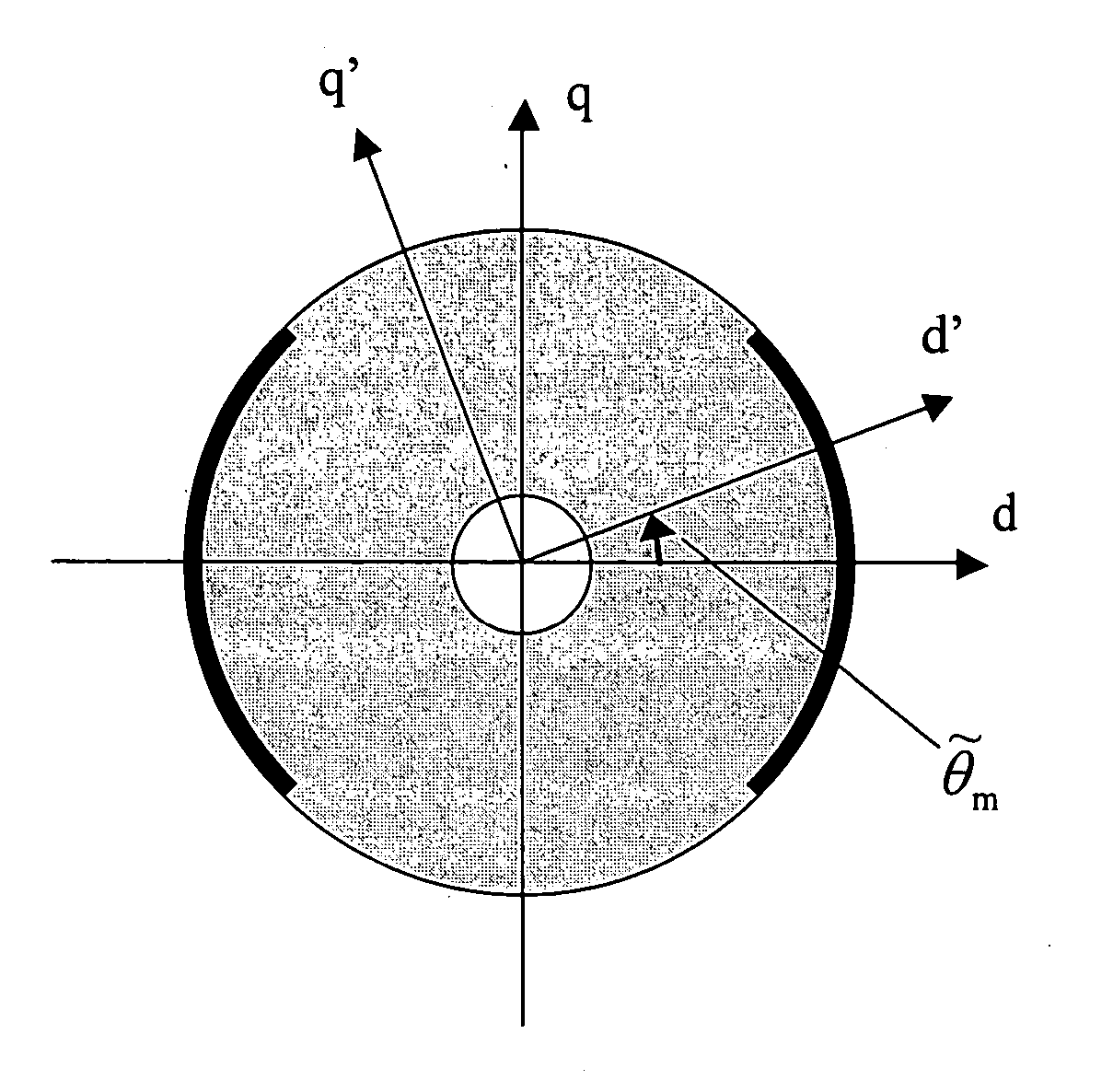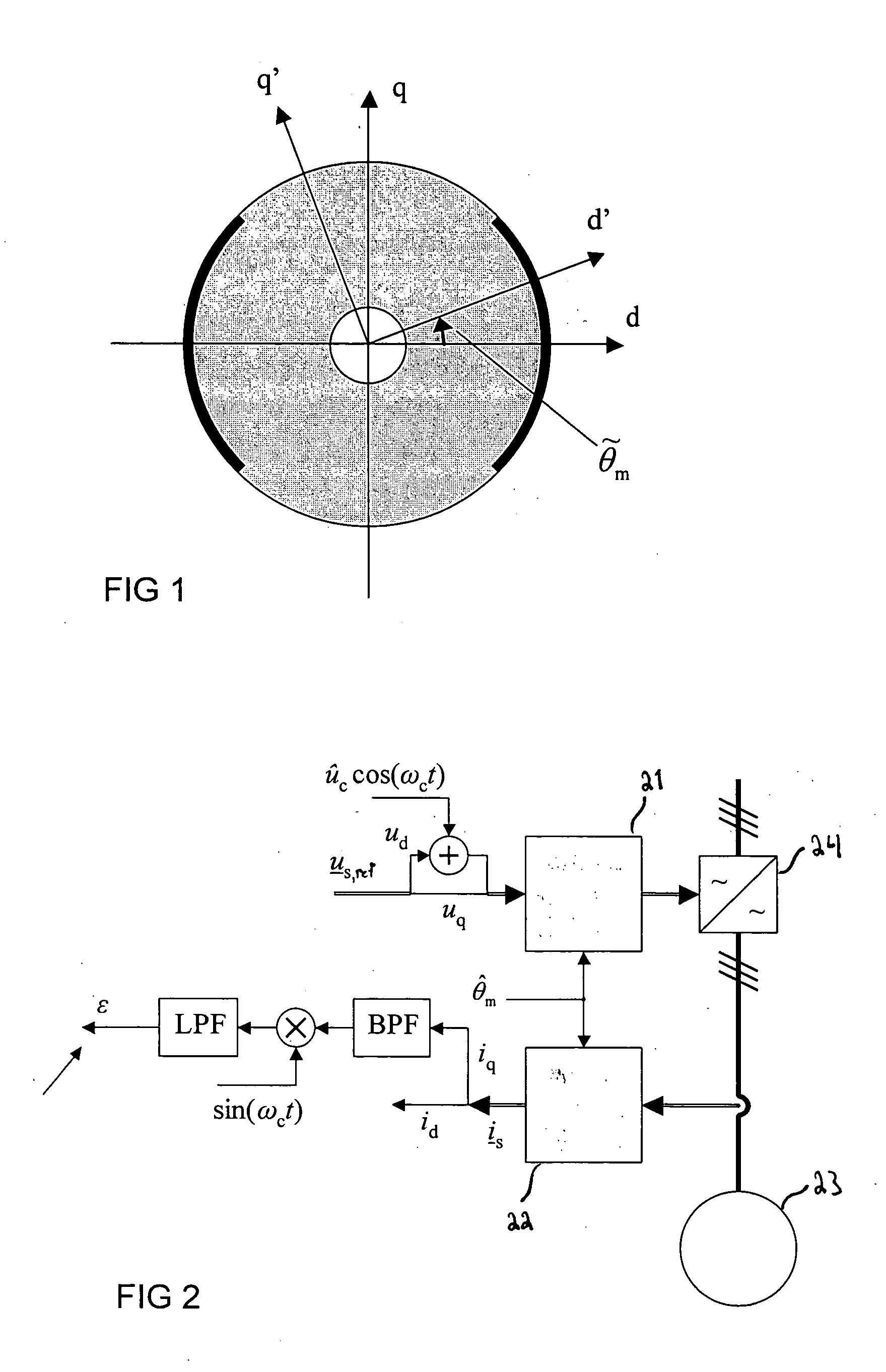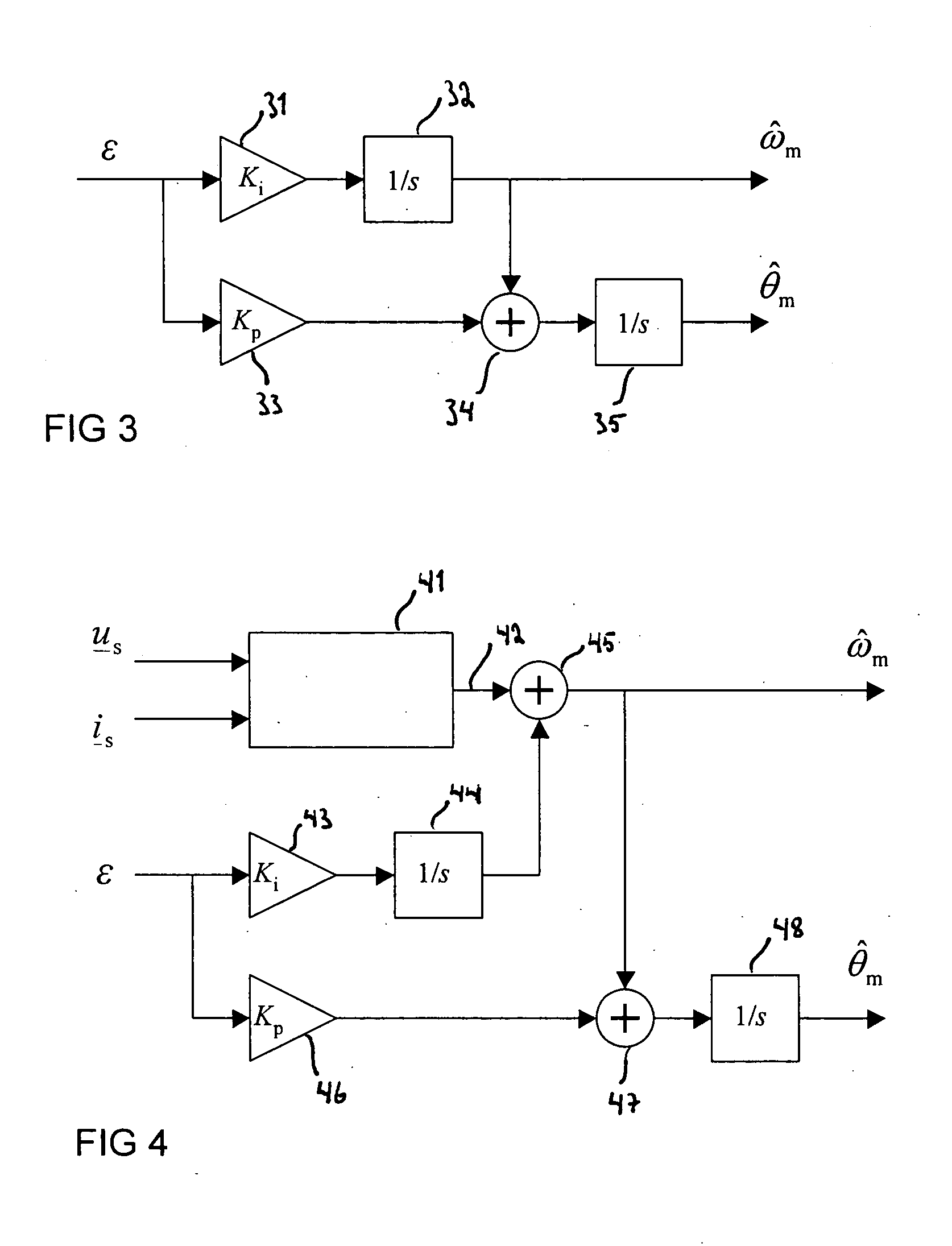Method in salient-pole permanent magnet synchronous machine
- Summary
- Abstract
- Description
- Claims
- Application Information
AI Technical Summary
Benefits of technology
Problems solved by technology
Method used
Image
Examples
Embodiment Construction
In the following, there is first described in detail a voltage model known per se, then signal injection known per se and finally a combination of these two, which constitutes a method of the invention.
Voltage Model
As mentioned above, in a flux observer based on a voltage model the flux and the speed are estimated from a stator voltage and a measured stator current. The voltage model is based on a motor voltage equation, which in connection with a solid rotor synchronous machine is expressed as u_ss=Rsi_ss+Lsⅆ ⅆti_ss+ⅆ ⅆtψ_pms(1)
where uss is stator voltage in stator coordinates, is iss a stator current, Ls is stator inductance, Rs is stator resistance and ψpms is a permanent magnet flux vector in stator coordinates. A time derivative estimate of the permanent magnet flux, i.e. a time derivative calculated from the estimated quantities, in the stator coordinates, is written as e^_fs=ⅆ ⅆtψ^_pms(2)
where a circumflex above a quantity denotes an estimate of the quantity. Th...
PUM
 Login to View More
Login to View More Abstract
Description
Claims
Application Information
 Login to View More
Login to View More - R&D
- Intellectual Property
- Life Sciences
- Materials
- Tech Scout
- Unparalleled Data Quality
- Higher Quality Content
- 60% Fewer Hallucinations
Browse by: Latest US Patents, China's latest patents, Technical Efficacy Thesaurus, Application Domain, Technology Topic, Popular Technical Reports.
© 2025 PatSnap. All rights reserved.Legal|Privacy policy|Modern Slavery Act Transparency Statement|Sitemap|About US| Contact US: help@patsnap.com



